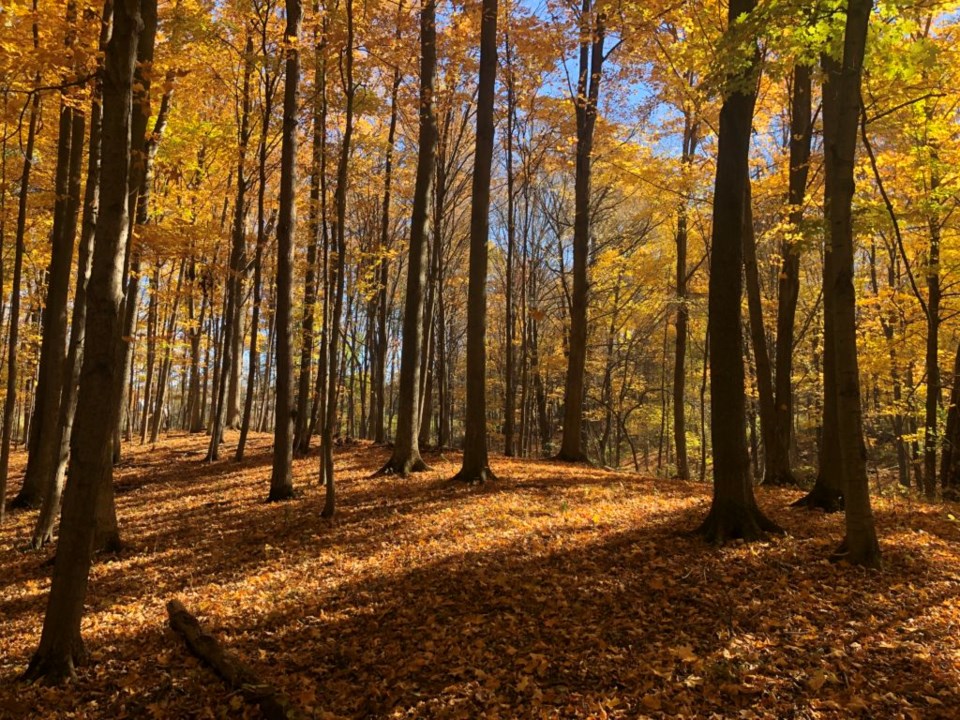
On my hiking tours, or with work at the school board, both adults and kids may ask “is this place protected?” Sometimes, it is followed by a “could it ever be developed?”
In my profession, I walk a fine line and groove a fine dance between optimism and pessimism. In theory, I would like to say with pure confidence that the Wainfleet Bog’s provincially unique wetland will never be chiseled away at, that the UNESCO-listed Niagara Escarpment in St. Davids won’t ever be embarrassingly shaved bare, and that one of NOTL’s last largest remaining woodlots won’t involuntarily make room for the next set of townhomes.
However, I have been surprised before. And not in in the fun way, where a Halloween ghoul jumps out to spook you. The biggest ghoul in reality, on a truly spooky occasion, is the Ford government’s latest blow to our already feeble yet precious environmental integrity. Last week, the provincial government tabled new legislation which will permit faster, more aggressive, and environmentally insensitive developments.
Perhaps you may jump to a conclusion to that I’m anti-development. This is absolutely not the case, personally or realistically. The human species is reproducing and growing, and we are going to need dwellings to support our society. We all seek a higher standard and quality of life. The growth is coming, so it is time to adapt versus deflect.
According to the legislation, Ontario has a goal of building more than 1.5 million new homes within the next decade. Do the math about how many people that represents in terms of population growth for our province. Perhaps an average of three people, at a modest guess, per 1.5 million housing units. The sheer surface area required for this quota is truly gob smacking.
Where do these units go when Ontario ideally needs to preserve its agricultural lands and respect its severely depleted wetlands and forests? With most of southern Ontario consisting of private property, new government powers could put the province’s 36 conservation authorities in a weird spot. With their mandates to protect watersheds and prevent people from living on floodplains, this new legislation could make such developer fantasies a reality.
I would rather see NOTL build obnoxiously tall, narrow dwellings than sprawl outwards with decreased barriers to said spread. This may be an unpopular opinion in a town which leans heavily on aesthetic values, but aesthetics is just a subjective construct of the human mind, while environmental services are a legitimate necessity for all humans, whether you live 100 feet up in the air or in a sprawling bungalow.
There’s no way this should ever get developed, for the time being, as it is protected to the highest standards. In objective reality, this forest should never be touched considering the state of environmental affairs on the Niagara Peninsula — that’s my go-to answer for the question I asked at the start of this article.
However, with worries that conservation authorities may now have less input to advise municipalities on ecologically distasteful developments, one can only imagine how money will likely do the talking while the animals do the walking and the creeks do the flooding.
Climate change in our backyard
On that note, I will be presenting at the Niagara-on-the-Lake Public Library on Monday, Nov 7 at 6:30 p.m. to discuss the potential growing impacts of climate change in NOTL. With photos from the Hidden Corners nature documentary, from NOTL and across the region, this talk will guide you through a collective picture of what we’re dealing with and what happens next in regard to our environment and society alike. It will be followed by an engaging question and answer period. Attendance is limited. Please register at notlpubliclibrary.libnet.info/events